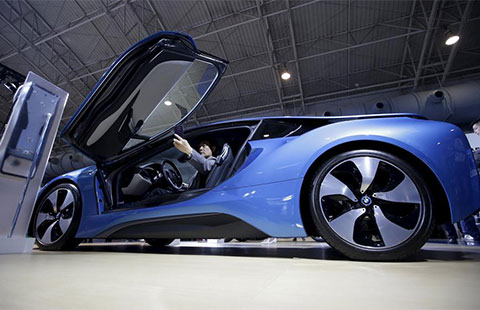HK, Macao and Taiwan should form a sub-trading bloc
By Thomas Chan in Hong Kong (China Daily) Updated: 2012-11-20 11:19
|
 |
It was expected that at the November ASEAN summit meeting in Phnom Penh, there would see discussion of the 10+6 regional free trade agreement framework, possibly even an announcement that negotiations had begun.
Already the ASEAN countries and their East Asian neighbors have concluded the 10+3 (China, Japan and South Korea) agreement both bilaterally and multilaterally. The logical next step, in anticipation also of the final integration of the ASEAN free trade area in 2015, is the further expansion of the regional free trade system to include the other even more enthusiastic three (Australia, New Zealand and India).
There are two major points of significance of this development. The first is political or arises from political economy. The US is now promoting the Trans Pacific Partnership (TPP) as a regional trade agreement in East Asia to compete with the 10+3 framework. So far, from the core founding members of Chile, New Zealand, Singapore and Brunei, the US is succeeding in engaging a reasonable number of Pacific countries to join the negotiations, including Canada, Mexico, Japan, Australia, Peru, Vietnam and Malaysia. The US is unable to get either China or India interested. Nor has the TPP become an established regional system. Everything is still in negotiation.
Nevertheless, China and other East and Southeast Asian countries have felt pressured, if not threatened by this exercise marking the return of the US to Asia. The quick evolution of 10+3 to 10+6 may be a strategic response from Asia to the US initiative. Whether it would divide the Asian countries will depend on how determined the US is to push forward the TPP in Asia. Behind the scenes, the TPP seems to group together countries that are suspicious of the resurgence of China in Asia or hostile to China under the US banner.
The second is the acceleration of regional integration in East and Southeast Asia. By 2015 the 10+3 would become the largest regional trading bloc in the world, at least in terms of population and with its already well established economic and trade dynamism.
One would expect it to challenge in economic scale and economic competitiveness the NAFTA led by the US, and the expanding EU, in the coming years. Although it would not lead to a tripolar development of the world economy and trade, as there are still dynamic emergent market countries outside the three blocs, including Russia, Brazil and South Africa in the BRICS, it would surely create a more multi-polar global system that would reduce the past domination of the triad economies (the US, EU and Japan).
These radical changes at the regional and global levels involve China on center stage, but other Chinese economies - Hong Kong, Macao and Taiwan - would be excluded, despite their economic scale and dynamism and their past centrality. The exclusion would mean marginalization, even though the three have respective free trade agreements with the Chinese mainland.
It is not certain whether other Asian countries are interested or willing to get the three economies on board, fearing that with the inclusion of the three, the formidable China would become even more formidable, because of the economic dependence on her of the three regional economies. Of course, the US is eager to get Taiwan and Hong Kong to join the TPP, in order to strengthen its own regional system, at the expense of the proposed 10+6 and to weaken the economic influence of the mainland over them. Beijing would certainly not allow it to happen.
If other Asian countries do not want the three economies to join the regional system and the mainland would not want them to ally with the US, the only breakthrough for the three might be to set up their own smaller free trade bloc.
With Hong Kong and Macao specializing in services and Taiwan in manufacturing and R&D, the three have a high degree of complementary assets and synergy. In addition, through their separate FTA with the mainland, they have almost equal access to the coming largest market in the world and would build up further economic bonds and synergy with what someday is to become the world's largest economy.
There are also close cultural and social affinities and physical proximity between the three plus the Chinese mainland that are not found in any other economies in the region. The internationalization of the Chinese yuan would also be a common hard currency that facilities trade and investment among the three plus the Chinese mainland.
The author is head of China Business Centre, Hong Kong Polytechnic University.
- Chinese investment helps Hollywood produce for global audience
- China outbound M&A beats 2015 record with 6 months to spare
- Fosun-owned Club Med to open Hokkaido resort in 2017
- Dutch giant bullish on dairy in China
- Wal-Mart to sell its China e-commerce operation to JD.com
- Parkson to shift its focus to lower-tier cities
- 'Big Bang' to Brexit: The City of London fears end of golden age
- CIMC ENRIC to use Internet Plus solutions to sustain growth


















